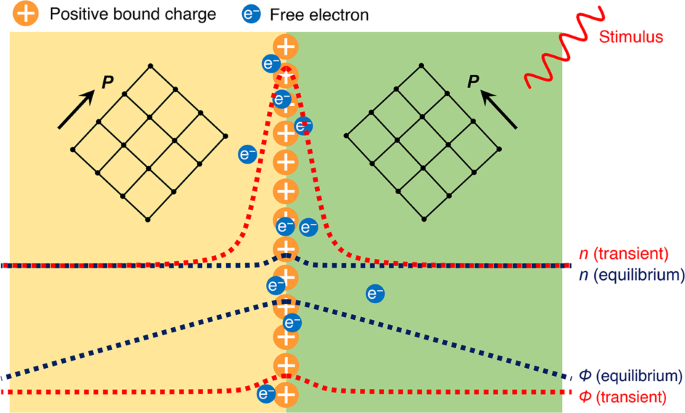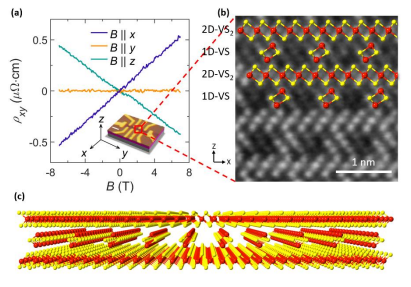2022-08-31 ローレンスバークレー国立研究所(LBNL)
ほとんどの原子核では、核子はその寿命の約20%を2核子の衝突による高運動量励起状態で過ごしている。
このような衝突を研究するために、物理学者は高エネルギーの電子ビームで原子核をたたく。散乱した電子のエネルギーと反跳角を測定することで、衝突した原子核がどれくらいの速度で動いていたかを推測することができる。
すべての粒子にタグを付けることで、陽子-陽子ペアや陽子-中性子ペアの相対的な数を集計することができた。
新しい実験では、分析に珍しい三重の同時発生を必要としないため、これまでの実験よりもはるかに多くのデータを収集することができた。その結果、これまでの測定精度を10倍も向上させることができた。研究チームは、トリチウムとヘリウム3の2核子の衝突が、より重い原子核と異なる働きをする。
<関連情報>
- https://newscenter.lbl.gov/2022/08/31/mirror-nuclei-unexpected-pairings/
- https://www.nature.com/articles/s41586-022-05007-2
鏡像核3Hと3Heの短距離構造を明らかにする Revealing the short-range structure of the mirror nuclei 3H and 3He
S. Li,R. Cruz-Torres,N. Santiesteban,Z. H. Ye,D. Abrams,S. Alsalmi,D. Androic,K. Aniol,J. Arrington,T. Averett,C. Ayerbe Gayoso,J. Bane,S. Barcus,J. Barrow,A. Beck,V. Bellini,H. Bhatt,D. Bhetuwal,D. Biswas,D. Bulumulla,A. Camsonne,J. Castellanos,J. Chen,J.-P. Chen,D. Chrisman,M. E. Christy,C. Clarke,S. Covrig,K. Craycraft,D. Day,D. Dutta,E. Fuchey,C. Gal,F. Garibaldi,T. N. Gautam,T. Gogami,J. Gomez,P. Guèye,A. Habarakada,T. J. Hague,J. O. Hansen,F. Hauenstein,W. Henry,D. W. Higinbotham,R. J. Holt,C. Hyde,T. Itabashi,M. Kaneta,A. Karki,A. T. Katramatou,C. E. Keppel,M. Khachatryan,V. Khachatryan,P. M. King,I. Korover,L. Kurbany,T. Kutz,N. Lashley-Colthirst,W. B. Li,H. Liu,N. Liyanage,E. Long,J. Mammei,P. Markowitz,R. E. McClellan,F. Meddi,D. Meekins,S. Mey-Tal Beck,R. Michaels,M. Mihovilovič,A. Moyer,S. Nagao,V. Nelyubin,D. Nguyen,M. Nycz,M. Olson,L. Ou,V. Owen,C. Palatchi,B. Pandey,A. Papadopoulou,S. Park,S. Paul,T. Petkovic,R. Pomatsalyuk,S. Premathilake,V. Punjabi,R. D. Ransome,P. E. Reimer,J. Reinhold,S. Riordan,J. Roche,V. M. Rodriguez,A. Schmidt,B. Schmookler,E. P. Segarra,A. Shahinyan,K. Slifer,P. Solvignon,S. Širca,T. Su,R. Suleiman,H. Szumila-Vance,L. Tang,Y. Tian,W. Tireman,F. Tortorici,Y. Toyama,K. Uehara,G. M. Urciuoli,D. Votaw,J. Williamson,B. Wojtsekhowski,S. Wood,J. Zhang & X. Zheng
Nature Published:31 August 2022
DOI:https://doi.org/10.1038/s41586-022-05007-2

Abstract
When protons and neutrons (nucleons) are bound into atomic nuclei, they are close enough to feel significant attraction, or repulsion, from the strong, short-distance part of the nucleon–nucleon interaction. These strong interactions lead to hard collisions between nucleons, generating pairs of highly energetic nucleons referred to as short-range correlations (SRCs). SRCs are an important but relatively poorly understood part of nuclear structure1,2,3, and mapping out the strength and the isospin structure (neutron–proton (np) versus proton–proton (pp) pairs) of these virtual excitations is thus critical input for modelling a range of nuclear, particle and astrophysics measurements3,4,5. Two-nucleon knockout or ‘triple coincidence’ reactions have been used to measure the relative contribution of np-SRCs and pp-SRCs by knocking out a proton from the SRC and detecting its partner nucleon (proton or neutron). These measurements6,7,8 have shown that SRCs are almost exclusively np pairs, but they had limited statistics and required large model-dependent final-state interaction corrections. Here we report on measurements using inclusive scattering from the mirror nuclei hydrogen-3 and helium-3 to extract the np/pp ratio of SRCs in systems with a mass number of three. We obtain a measure of the np/pp SRC ratio that is an order of magnitude more precise than previous experiments, and find a marked deviation from the near-total np dominance observed in heavy nuclei. This result implies an unexpected structure in the high-momentum wavefunction for hydrogen-3 and helium-3. Understanding these results will improve our understanding of the short-range part of the nucleon–nucleon interaction.



